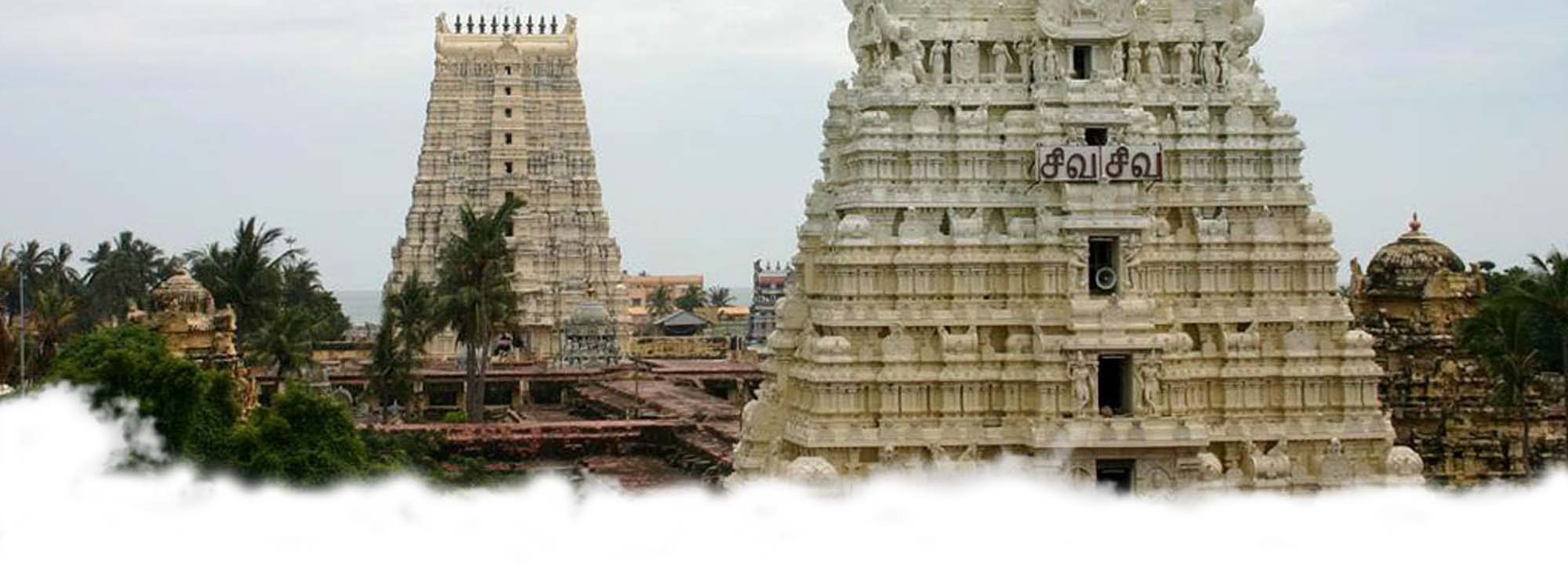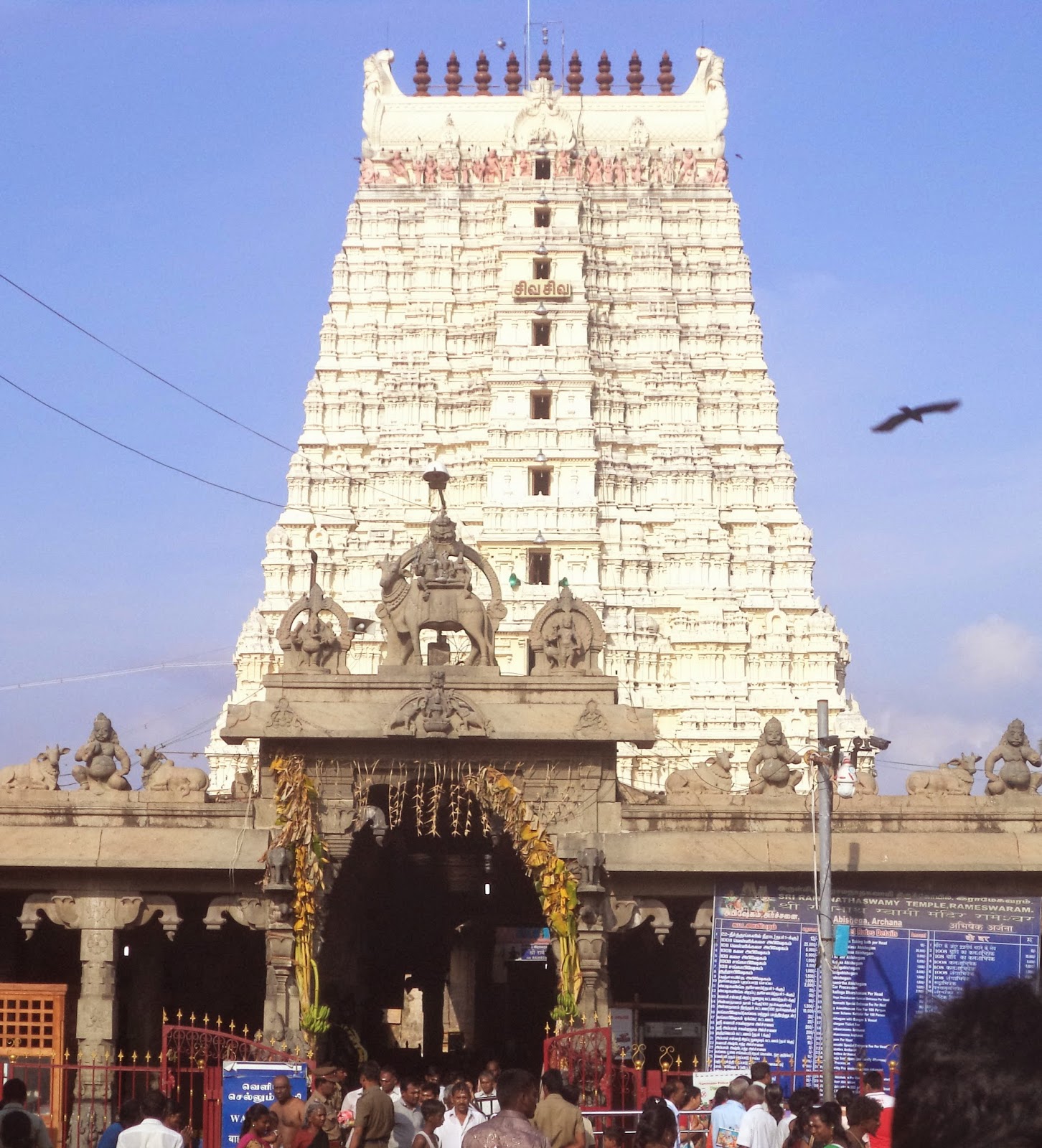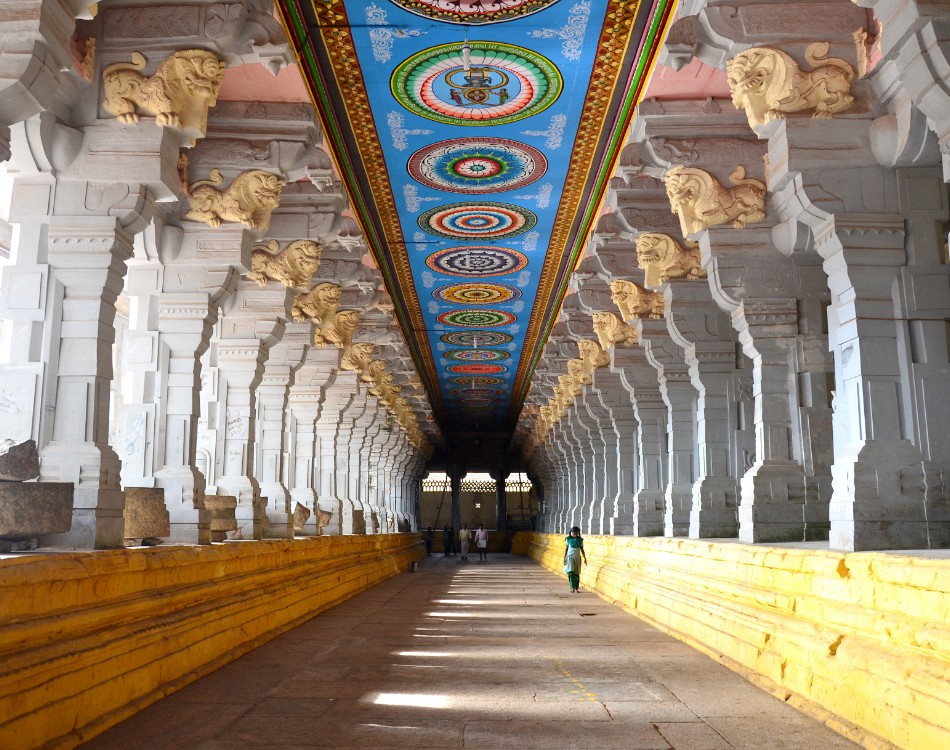
Rameshwaram Temple
The world-renowned Rameswaram temple, also known as Sri Ramanathaswamy temple, is a glorious Hindu temple at the southernmost edge of India.
History Behind the Rameshwaram Temple
Blessed by the presence of Lord Rama, the temple is an exquisite example of Dravidian architecture in India.
The Rameswaram temple is linked with the Hindu epic Ramayana. The story has it that after killing the demon King Ravana to save his wife, Lord Rama headed to Rameswar on his way back to Ayodhya.
On the way, some saints advised Rama to worship Lord Shiva in order to compensate for the sin of killing a Shiva devotee (Ravana). Lord Rama agreed and asked Lord Hanuman (a helpful monkey-friend of Rama) to bring a Shivlinga from Kailash (Himalayas).
Rama fixed a certain auspicious time for the installation of the Shivlinga, but Lord Hanuman couldn’t make it in time. As the installation time approached, Lord Rama became restless and asked his consort, Sita, to build a lingam. Sita built a beautiful “Ramalingam” out of the sand, and Lord Rama installed the lingam in Rameswaram.
When Lord Hanuman returned with Jyotirlinga from Kailash, he became upset about seeing the already installed lingam. To make up for it, he requested Rama that the Shivlinga brought from Kailash is worshipped before the “Ramalingam”. Lord Rama agreed to this, and since then, it has been a tradition to worship the Shivlingam before the Ramalingam in the temple.

The Significance of the Temple
Rameswaram has an irreplaceable place in the hearts of Shaivites and Devout Hindus from around the world. The temple houses one of the 12 auspicious Jyotirlingas of Lord Shiva which are believed to be swayambhoo (self-manifested). Moreover, Rameswaram is also among the 275 Paadal Petra Sthalams in India. These are places where revered Shaivaite saints like Appar, Sundarar, and Tiruguna sang glorious hymns of Shiva. Historical evidence claims that Swami Vivekananda also visited the Rameswaram temple before his tour to Chicago.
The Rameswaram temple is also one of the destinations of the Char Dham Yatra, which is a pilgrimage of the highest ranks in Hinduism. It is believed that no pilgrimage bears full fruit without visiting this sacred abode of Mahadev. The Rameswaram temple has 22 teerthams (sacred ponds) having holy water which can rinse off all earthly evils from the body.
Rameswaram is known for cleansing all human sins and blessing the human body with eternal grace. Many devotees also come here to perform after-death rituals of their loved ones in an attempt of providing them salvation. Doing “Abhishek” (Coronation) of the Rameswaram Vishwalingam is the highest form of religious sanctity.
Many devotees who have visited Rameswaram claim that they felt an overpowering sense of relief washing over them during their entire visits. Some unique incidents that stand out are the ones related to the 22 holy teerthams of Rameswaram temple.
Some devotees claim that whenever someone bathes in the holy waters of the first few teerthams, he is reminded of all his sins committed in his entire life. People asserted that they could see all their wrong-doings and blips in their characters running like a slideshow inside their minds. They say that once someone has bathed in the first few teerthams, these visions start fading off and his mind becomes still. The other teerthams then work to add elements of peace and happiness in the person’s body. Although these are very intangible experiences, the large number of people who reported such visions is quite surprising.
Architectural Significance
Rameswaram temple is an amalgamation of regal architectural style and abundant spiritual energy. It is one of the few temples in India depicting the world-famous Dravidian architectural style. Typical of all South Indian temples, Rameswaram has high compound walls (called madils) guarding the temple from all four sides. Stretching over 15 acres, the temple premises also house 22 teerthams (ponds) where devotees take holy dips.
The teeming 120-feet Gopurams adorn the skyline of the Rameswaram island. The striking features of its interior include massive colonnades standing on 5-feet plinths. The temple has many corridors made of hundreds of sandstone pillars, beams, and high ceilings. The total length of these corridors which have more than 4000 pillars is about 3800 feet.
The colossal granite walls are marked by intricate carvings and depictions of Hindu deities. There are five main halls, namely- Sukravara Mandapam, Anuppu Mandapam, Setupati Mandapam, Nandi Mandapam, and Kalyana Mandapam. Inside the sanctum sanctorum lies the two lingams- the Ramalingam and the Vishwalingam. You will also witness a huge statue of Nandi, Shiva’s bull vehicle, which is a source of awe due to its 12-feet long, 9-feet high form.

Interesting Facts About the Rameshwaram Temple
- The third corridor of the Rameswaram temple, which has about 1200 pillars standing 22 feet high is considered the world’s largest temple corridor.
- In honor of the glory of Rameswaram, the British Government had released a stamp having the picture of the temple. These stamps were released in 1935 and were circulated for a few years in the region.
- The 22 teerthams inside the temple premises have a unique taste, temperature, curative properties, and salinities. This is quite surprising given the locations of all the teerthams are very close.
- The teerthams are said to be dug by Lord Rama when he fired his arrows piercing the sand.

